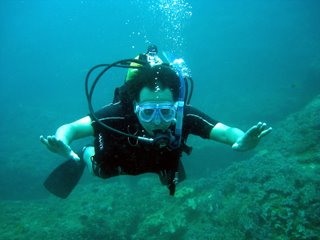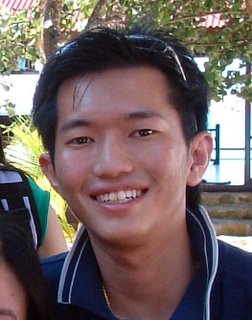Dive #6: D'Lagoon, Perhentian Kecil
Location: Pulau Perhentian, Malaysia
Time (GMT+8): 3:30pm
Duration: 0:44 (C.T.: 4:09)
Max Depth (m): 12.0
Sky: Slight cloudy
Waters: Calm
Visibility (m): 10.0
Bottom Temp (ºC): 29.0 (est)
Air (bar): 200/100
Surface Interval: N/A
Start P/G: N/A
End P/G: J
Dive Buddy: Tsurumi-san (DM) a.k.a. Tsunami
Divemaster: Mikiko Ando a.k.a. Miki (Nihonjin) - Scubaholics
It was great to get back below the surface of the water. 7 snorkeling trips in 24 hours was getting a little boring.
The site wasn't so deep. Max depth of 12m, we actually used less than half our tanks. I hate to think that the dive centre picked that spot because they had a newbie (me) in the group, but I somehow suspect so. It was either me, or the other Caucasian couple who looked like it was their first time. Well, I'm glad I didn't have to struggle with any of it... my ego just wouldn't allow it. :o)
Perhentian is a place where divers go out on small motorized sampan-like boats. There's no shade so it's a good thing the dive sites are near. There's also no boat ladder, so we use the back roll entry, and then unload our weights, BC and tank in the water before climbing back aboard.
I'm not familiar enough with the names of the marine life that surrounded me, so nothing to report. Oh, except the six banded angel fish Miki kept getting so excited about. And also I now know what trigger fish look like.
My first dive out with no one I know, but being me, I made friends. Some local, some not. But I'm kicking myself for not getting their emails.
Scubaholics charges RM55 per boat dive if you have your own equipment... RM80 and they provide you with everything you need. They offer bulk packages too, which makes it really worth it.





